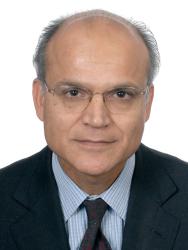Distribution of income within nations has become one of the most debated issues of our time. Over the past three decades, income inequality has been rising in most major economies, reaching levels in many cases not seen since the pre-war period.
In advanced economies, income inequality was on a declining trend for most of the post-war period until about 1980. Since then, and especially since 1990, it has risen in the vast majority of advanced economies. All of the nine advanced economies that are members of the G-20, made up of leading developed and developing nations, saw the Gini coefficient (the most commonly used statistical measure of inequality) of disposable income rise between the early-to-mid 1980s and 2013 (or the most recent year for which consistent estimates are available). The sharpest increase was in the U.S., where the Gini coefficient of disposable income rose from 0.34 in 1985 to 0.40 in 2013 (Figure 1). Of the 22 member countries of Organization for Economic Cooperation and Development, for which long-term time series are available, the Gini coefficient of disposable income rose from 0.29 in the mid-1980s to 0.32 in 2013, with 20 out of the 22 economies seeing an increase by varying amounts.
Income inequality is typically higher in developing and emerging economies than in advanced economies. In most major emerging economies, income inequality rose over the past three decades. The picture is mixed more broadly in the developing world. The largest increases among major emerging economies that are G-20 members, as measured by the Gini coefficient of disposable income, were in China, Russia, and South Africa, with India also experiencing a notable increase (Figure 1). One developing region that bucked the trend and saw some decline in inequality was Latin America. Several economies in the region, including Brazil, the region’s largest economy, saw a drop in inequality, especially in the past two decades. Average income inequality in the region, however, remains the highest in the developing world.
An increasing concentration of income at the top end of the distribution has driven rising inequality in many cases. This is seen, for example, in the sizable increase in the ratio of the income of the top 10 percent of the population to that of the bottom 10 percent (Figure 2) and the even larger increase in the share of the top 1 percent in total income (Figure 3). The income ratio between the top 10 percent and the bottom 10 percent rose in most advanced economies as well as many major emerging economies over the past three decades. The income share of the top 1 percent also rose, and more sharply, in most of these economies over the same period. The increase in the share of the top 1 percent is striking in several cases, particularly the U.S. where the market income share of the top 1 percent more than doubled from 8 percent in the early 1980s to almost 20 percent in 2012. Still more striking is the fourfold increase in the income share of the top 0.1 percent from about 2.5 percent to 10.4 percent over the same period.
A correlate of rising income inequality has been the declining share of labor relative to capital in national income. The labor income share fell in the past two to three decades in all advanced economies and major emerging economies that are G-20 members for which comparable data are available, except in Russia (Figure 4). For the OECD as a whole, the labor income share fell from about 67 percent in the early 1990s to about 61 percent by 2010. Also, within labor’s declining income share, the dispersion of earnings has become more skewed, with this tendency toward wage-stretching particularly strong in many advanced economies. For the OECD countries, the labor income share of the top 1 percent earners increased by 20 percent in the two decades since 1990, while that of low-income workers slumped. The sharp increase in the income share of the richest 1 percent of households also points to an increasing concentration of capital income.
Tax and transfer policies have mattered, however. They do reduce inequality, but substantially more in some countries than in others. Relative to inequality of market income, inequality of income after taxes and transfers (disposable income) is generally much lower in European countries than in the U.S. (Figure 5). Over recent decades, while both the Gini coefficient of disposable income and that of market income have risen, the former has been about one-third lower than the latter on average in advanced economies. In more recent years, as a result of reduced marginal tax rates on higher incomes, lower taxes on capital, and tighter social spending in many advanced economies, the redistributive role of the state has tended to weaken. It has not been strong enough to offset the rise in market income inequality and prevent significant increases in disposable income inequality. Tax and transfer policies typically play a smaller redistributive role in emerging economies, reflecting lower levels of both taxes and social transfers. More recently, a strengthening of social programs in Latin America has been a factor contributing to the region’s success over the past decade or so to begin to reduce inequality from high levels.
Taxes and transfers do not, of course, capture the entire or perhaps even the most important part of social policy systems. Access to and cost of public services, such as education and health, have important distributional consequences. Inequality in well-being in a country that provides most of education almost free for everyone is likely to be much lower than that in a country where most education must be paid for, even though their disposable income Gini coefficients may be similar. The same goes for health care. While direct taxes and transfers typically play a stronger redistributive role in advanced economies, in-kind benefits, notably education and health spending, play a stronger redistributive role in emerging economies. For example, in-kind education and health benefits are estimated to reduce the Gini coefficient by an average of 5.8 percentage points in the U.S. and five European economies (Belgium, Germany, Greece, Italy, and the U.K.) compared to an average of almost 10 percentage points in Chile, Brazil, and South Africa. In many developing and emerging economies, however, the potential redistributive role of education and health spending is limited by the regressive nature of large parts of such spending.
Incorporating in-kind public education and health benefits into income distribution accounting presents difficult challenges of valuation of these benefits and their fiscal incidence. There is also an issue of how to treat employer provided health care.
There is an ongoing debate about the significance of the distribution of income at a point in time versus the distribution of opportunity for economic mobility. Most would agree that high income inequality is more “acceptable” if it is accompanied by greater equality of opportunity and hence more economic mobility. But opportunity and mobility are not independent of income inequality. High income inequality is both a symptom and a cause of low economic mobility. Importantly, higher income inequality reduces the ability of lower-income households to accumulate human and physical capital. Most available evidence shows that intergenerational mobility is negatively related to income inequality (as captured by the “Great Gatsby Curve”). In countries experiencing a sharp rise in income inequality, the consequences of the “birth lottery” (the parents to whom a child is born) have increased and the playing field has become more tilted for the next generation. Intergenerational mobility could suffer unless offsetting policy actions are taken to expand access to opportunity, especially access to education and skill-building in a world where technology is increasing the premium on skill.
Economic mobility is further challenged by an even sharper concentration of wealth accompanying the rise in income inequality. In advanced economies, wealth Ginis are on average twice as high as disposable income Ginis. In the U.S., for example, the latest estimate of the wealth Gini is about 0.85. The wealth share of the richest 1 percent in the U.S. rose from 29 percent in 1980 to 34 percent in 2010.
Finally, the distribution of monetary income, or income adjusted for in-kind benefits, is not the only “metric” relevant to the overall debate on distribution. One other metric that has gained importance is the distribution of “subjective well-being” or “happiness” derived from survey data. Findings drawn from measures of subjective well-being are the subject of a separate note prepared by Carol Graham.
In conclusion, the basic story that emerges from a review of the evidence on income distribution is one of steady and often major increases in inequality within countries over the past about three decades. Different measures of inequality do not change the story in any fundamental way. Inequality within countries has been rising at different speeds but almost across the board among major economies, and this trend has been particularly marked within the group of advanced economies.
The Brookings Institution is committed to quality, independence, and impact.
We are supported by a diverse array of funders. In line with our values and policies, each Brookings publication represents the sole views of its author(s).





